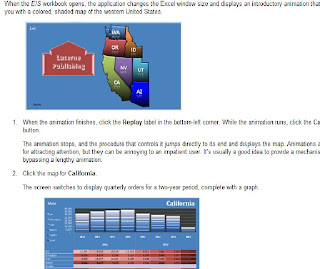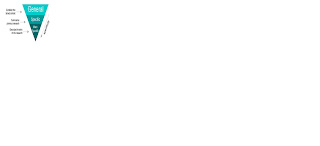A. Title: Key Issues in Information Systems Management:A Shift Toward Technology Infrastructure
By. James C. Brancheau, Brian D. Janz, James C. Wetherbe
1994 Key Issues Framework
1 Building a Responsive IT Infrastructure
2 Facilitating and Managing Business Process Redesign
3 Developing and Managing Distributed Systems
4 Developing and Implementing an Information Architecture
5 Planning and Managing Communication Networks
6 Improving the Effectiveness of Software Development
7 Making Effective Use of the Data Resource
8 Recruiting and Developing IS Human Resources
9 Aligning the IS Organization within the Enterprise
10 Improving IS Strategic Planning
11 Implementing and Managing Collaborative Support Systems
11 Measuring IS Effectiveness and Productivity
13 Increasing Understanding of IS Role and Contribution
14 Facilitating Organizational Learning
15 Managing the Existing Portfolio of Legacy Applications
16 Facilitating and Managing End-User Computing
17 Using Information Systems for Competitive Advantage
18 Planning and Integrating MultiVendor Open Systems
19 Developing and Managing Electronic Data Interchange
20 Outsourcing Selected Information Services
-- Implementing Decision and Executive Support Systems dropped --
-- Improving Information Security and Control dropped --
-- Developing and Implementing Object-Oriented Technology dropped --
-- Improving Disaster Recovery Capabilities dropped --
-- Developing and Implementing Multimedia Applications dropped --
-- Implementing and Integrating CASE Technology--dropped
Note: All data are from the final round of the Delphi survey (N = 83).
B. Title: Critical Issues of Information Systems Management in Hong Kong
By. Louis C.K. Ma
Critical Issues of IS Management (1999)
1. Improving the Effectiveness of Software Development
2. Building a Responsive IT Infrastructure
3. Increasing Understanding of IS Role and Contribution
4. Making Effective Use of the Data Resource
5. Developing & Implementing an Information Architecture
6. Aligning the IS Organization within the Enterprise
7. Improving IS Strategic Planning
8. Using Information System for Competitive Advantage
9. Facilitating and Managing End-User Computing
10. Managing the Existing Portfolio of Legacy Applications
11. Measuring IS Effectiveness and Productivity
12. Planning and Managing Communication Networks
13. Improving Information Security and Control
14. Facilitating and Managing Business Process Redesign
15. Recruiting and Developing IS Human Resources
16. Establishing Effective Disaster Recovery Capabilities
17. Facilitating Organization Learning
18. Implementing and Managing Collaborative Support System
19. Planning and Integrating Multi-Vendor Open System Technologies
20. Developing and Managing Distributed Systems
21. Facilitating/Managing Decision and Executive Support Systems
22. Developing and Managing Electronic Data Interchange (EDI)
23. Outsourcing Selected Information Services
24. Planning and Using CASE Technology
1. Improving the Effectiveness of Software Development
The application development backlog remains at unacceptably high levels. Traditional development methods and platforms are no longer satisfactory. New methods and platforms have not yet proven themselves. Sophisticated users are getting impatient. Improved effectiveness will be essential for next-generation applications.
2. Building a Responsive IT Infrastructure
Building a technology infrastructure that will support existing applications while remaining responsive to change is a key to long-term enterprise productivity. This task is frustrated by the continuing rapid changes in infrastructure technology and the increasing breadth and depth of applications, which need to be supported.
3. Increasing Understanding of IS Role and Contribution
IS is often viewed as an operational activity with little recognition for its strategic contribution to the organization. This can result in executive management viewing IS strictly as an overhead expense. Funding can be cut resulting in missed opportunities for using IT to solve important business problems.
4. Making Effective Use of the Data Resource
The organization’s data resource is growing in size, complexity, and value. Despite this, it remains largely unrecognized, inaccessible, and underutilized. IS must develop a climate within its department and throughout the organization which values the data resource as a corporate asset.
5.Developing & Implementing an Information Architecture
A corporate/global information architecture is needed to identify the major information categories used within an enterprise and their relationships to business processes. It is essential for guiding applications development and facilitating the integration and sharing of data.
6. Aligning the IS Organization within the Enterprise
The IS organization’s effectiveness in supporting the enterprise’s needs is dependent on its organizational location within the enterprise. Appropriate alignment may require a combination of centralized and decentralized structures. Too often IS is not located and structured appropriately.
7. Improving IS Strategic Planning
It has always been important to align long-rang IS plans with strategic business plans. Rapidly changing business environments, increased involvement of end users, and accelerated technological change underscore the need to continue improving strategic planning skills.
8. Using Information Systems for Competitive Advantage
In many businesses, long-term survival is dependent on using information systems to gain competitive advantage. Competitive advantage results from recognition of opportunities through creativity and innovation, followed by rapid implementation. These are historical weaknesses of the IS organization.
9. Facilitating and Managing End-User Computing
The proliferation of end-user computing through personal computers offers the promise of improved productivity but also the dangers of inadequate management control. Information systems management must balance control against the need for slack. Clarification of IS and end-user roles is a necessity.
10. Managing the Existing Portfolio of Legacy Applications
Most organizations have a large investment in their existing applications portfolio. Some “legacy” applications may need to be retired quickly. Others may need to be leveraged for many years before they are replaced. Integrating new technologies and migrating to new operating environments can be difficult. Too little is known about managing these problems.
11. Planning and Managing Communication Networks
Communication is the lifeblood of the organization. Using IS for competitive advantage depends heavily on access to appropriate internal and external communication networks. This task is complicated by rapid advances in underlying technology and major structural changes in the communications industry. (e.g. Internet, Intranet, Video Conferencing and Wireless Networks).
12. Measuring IS Effectiveness and Productivity
Understanding how IT use impacts the bottom-line is crucial for justifying new investment. In addition, measuring the IS organization’s performance is necessary for effective management. Measurement is becoming more important as companies attempt to reduce operating expenses to meet the competition.
13. Improving Information Security and Control
As organizations increase their dependence on information systems, there is a greater risk from destruction and alteration of data, disclosure to outside sources, and disruption of information services. Tight security controls and fault-tolerant information delivery are becoming a necessity.
14. Facilitating and Managing Business Process Redesign
To remain competitive, many organizations are radically changing the way they do business. IT plays an increasingly important role in this change process by enabling the innovative redesign of core business processes. Much has been learned about IT implementation in general which can help facilitate and manage BPR projects.
15. Recruiting and Developing IS Human Resources
Current and future shortages of qualified IS personnel threaten the organization’s ability to make effective use of information technology. More emphasis needs to be put on developing business skills such as object-oriented and multimedia applications.
16. Establishing Effective Disaster Recovery Capabilities
Downside risks are increasing daily from the potential loss of business due to a disaster. Effective recovery plans must be in place and tested regularly to ensure losses are minimized. As organizational applications grow and become more integrated, the greater the risk becomes.
17. Facilitating Organizational Learning
Organizations that prosper will need to make appropriate use of information technologies across their entire enterprise. Business practices and organizational structures will need to be modified in many cases. IS also must demonstrate its own ability to learn and use new technology.
18. Implementing and Managing Collaborative Support System
New software is needed to support the reengineered, flat, team-based organization of the future. Appropriate IT support can help teams share information and lead to faster decision making and improved team effectiveness. Such support will become even more important in a distributed ubiquitous computing environment.
19. Planning and Integrating Multi-Vendor Open System Technologies
Many companies are moving away from single-vendor proprietary operating environments to vendor-neutral environments based on industry and de facto standards. Due to large investments in legacy systems, carefully planned migration paths are critical. This task is complicated by a still-maturing technology and unstable standards.
20. Developing and Managing Distributed Systems
Client-server applications promise to offer a cost-effective alternative to centralized application. Unfortunately, they present many challenges including: maintaining consistent software versions; maintaining consistent data; controlling joint development projects with users; and administering large-scale distributed applications.
21. Facilitating/Managing Decision and Executive Support Systems
Increasing the ability to exploit situations for competitive advantage depends on enhancing the ability of management to “experiment” with decision possibilities. Many other issues also depend on this capability. Decision support tools have long been viewed as a method for introducing modelling tools to executives to improve their decision making. However, these efforts have met with mixed success.
22. Developing and Managing Electronic Data Interchange (EDI)
Electronic communication (via internet or proprietary EDI networks) with customers and suppliers may offer competitive advantage to a company or it may be a requirement for staying in business. IS executives must develop (or adapt to) standard transaction formats, keep current on technology developments, and learn to manage inter-organizational projects.
23. Outsourcing Selected Information Services
The internal information systems organization no longer has a monopoly. Outside contractors may be able to provide some services more effectively. What services should be outsourced? How should contractor relationships be managed? Fair and objective evaluation techniques are needed which assess both costs and benefits as well as potential risks from loss of control.
24. Planning and Using CASE Technology
Significant progress has been made automating business functions within organization; however, a vast productivity gain is possible if the automation process itself is automated. In principle, software systems can provide support for integrating the design efforts of project teams, standardizing representation methods, and generating code. While this technology is still being refined, providing support for systems development is extraordinarily complex and will require major changes within the IS function.
C. Title: Key issues in information systems management in China
By. Guoqing Chen, Ruipeng Wu and Xunhua Guo, 2007
(This article need permission by publisher)



